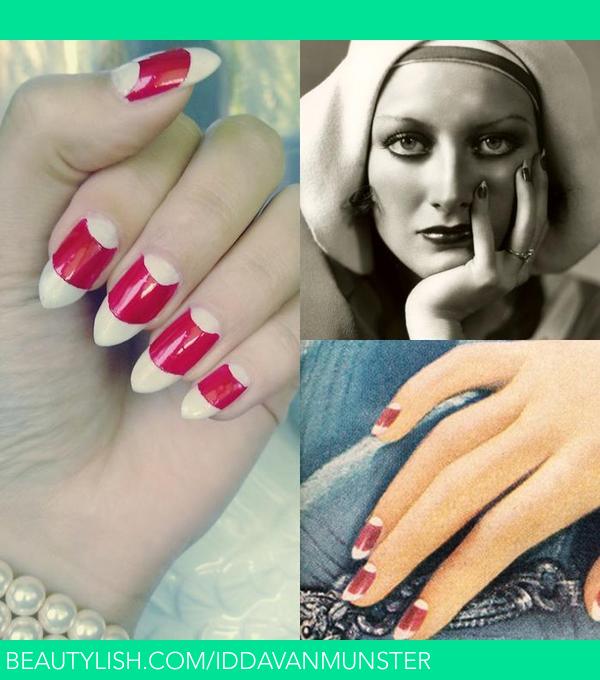
 5
5




Although cosmetics producers in Canada are required to disclose product ingredients, they don’t have to warn you about the health concerns associated with those ingredients.
According to the David Suzuki Foundation 2010 report What’s Inside? That Counts, 80 per cent of cosmetics contain at least one ingredient linked with health and environmental concerns, including cancer, reproductive disorders, asthma and severe allergies.
Your bottle of nail polish has at least three.
Dibutyl phthalate— Used as a solvent for dyes and as a plasticizer to prevent nail polishes from becoming brittle, this phthalate is classified by the EU as a suspected endocrine disruptor and as toxic to reproduction. Health Canada associates DBP with liver and kidney failure in young children when products (and polished little fingers) containing phthalates are sucked or chewed for extended periods. Although Health Canada banned six phthalates (including DBP) in soft vinyl children’s toys, its use in cosmetics is not restricted. The European Union classifies DBP as very toxic to aquatic organisms.
Formaldehyde— Formaldehyde is a common ingredient in nail hardeners in concentrations of up to five per cent. In nail polish, tosylamide/formaldehyde resin is used, and may contain residual formaldehyde concentrations of up to 0.5 per cent. The International Agency for Research on Cancer classifies formaldehyde as a known human carcinogen.
Toluene— According the Canadian Centre for Occupational Health and Safety, toluene is a moderate skin irritant that can cause dermatitis with prolonged contact. It is also a developmental toxicity hazard and has been identified in human milk. Inhalation of toluene vapour can affect the central nervous system causing slight drowsiness and headache at low levels and Irritation of the nose, throat and respiratory tract at increased levels.







 6
6




Learning slowly...
How permies.com works
 2
2











 3
3




“In general, sharing nail polish does not present a health or infection risk,” she says. “This is because the solvents in nail polish are chemically toxic to microorganisms by degrading their cell walls within seconds of contact. In fact, there have been studies that show that microbes cannot survive in nail lacquer, whether they are in a salon or deliberately contaminated with microorganisms for laboratory studies.” So, you don't have to give that much-used bottle of Mademoiselle at your local nail joint the stink-eye anymore.







 6
6




Quickly becoming one of the most sought-after nail polishes, this line of lacquer was born from the simple idea of creating an eco-friendly yet high-end product. Initially inspired by the twin daughters (darlingly named Ella and Mila) of one of the founders, the luxury brand took sail....
...With a passion for color and dedication to healthy beauty, the founders strive to provide fashion-forward beauty products without compromise. In addition to being chip-resistant, quick-dry and high-shine, ella+mila nail colors contain no Acetone, Animal-Derived Ingredients, Bisphenol-A, Camphor, Ethyl Tosylamide, Formaldehyde, Formaldehyde Resin, Gluten, Glycol Ether of Series E (Gycol ethers derived from ethylene oxide), Nonylphenol Ethoxylate, Parabens, Phthalates (including DBP), Styrene, Sulfate, Toluene, Triphenyl Phosphate (TPHP/TPP), Xylene, making it a seventeen chemical-free product. But the advantages don't end there! ella+mila polishes are also PeTA-certified.
'What we do now echoes in eternity.' Marcus Aurelius
How Permies Works Dr. Redhawk's Epic Soil Series
 6
6




Nail Polish Ingredients: Butyl Acetate, Ethyl Acetate, Nitrocellulose, Acetyl Tributyl Citrate, Phthalic Anhydride/Trimellitic Anhydride/Glycols Copolymer, Isopropyl Alcohol, Stearalkonium Hectorite, Adipic Acid/Fumaric Acid/Phthalic Acid/Tricyclodecane Dimethanol Copolymer, Citric Acid, Bis(glycidoxyphenyl propane/Bisamino methylnorbornane Copolymer, Aluminum Hydroxide, Polybutylene Terephthalate, Polyethylene Terephthalate, Styrene/Acrylates Copolymer
Polish May contain (+/-): Aluminum Powder (CI 77000), Iron Oxides (CI 77499 / CI 77491), Red 34 Lake(CI 15880), Red 6 Lake (CI 15850), Red 7 Lake (CI 15850), Yellow 5 Lake (CI 19140), Ferric Ammonium Ferrocyanide (CI 77510), Mica (CI 77019), Blue 1 (CI 42090), Yellow 11 (CI 47000), Titanium Dioxide (CI 77891), Violet 2 (CI 60725), Yellow 10 (CI 47005), Red 28 (CI 45410), Red 22 (CI 45380)
 8
8




"How fleeting are all human passions compared with the massive continuity of ducks.“ — Dorothy L. Sayers
 1
1











 1
1




 2
2











 2
2




"How fleeting are all human passions compared with the massive continuity of ducks.“ — Dorothy L. Sayers
 2
2











 3
3











 2
2




Nail files are typically made from sandpaper, cardboard and glue. While they certainly can last a while, they’ll eventually need to be tossed out because they can’t be properly sanitized. Instead, choose an eco friendly nail file made from stone, glass or metal. These can be easily sanitized and reused for years to come, making them zero waste.
Instead of disposable cotton rounds, try switching to reusable nail polish remover pads. I really like these homemade ones from Etsy – they’re made using 100% bamboo felt. If you’re good at sewing, you can even craft your own cotton rounds from an upcycled flannel shirt like I did.







 2
2











 4
4












 2
2











 3
3




The wishbone never could replace the backbone.
 4
4












 2
2





D&C BLACK NO. 2 (CI 77266)
Appeared as: BLACK 2 (CI 77266)
Data Availability: Robust
CONCERNS • Cancer (moderate)
• Developmental/reproductive toxicity (moderate)
• Allergies/immunotoxicity (moderate)
• Use restrictions (high)
• Neurotoxicity (low)
• Endocrine disruption (low)
• Persistence and bioaccumulation (moderate)
• Non-reproductive organ system toxicity (moderate)
• Contamination concerns (CADMIUM (pyrophoric))

 4
4





|
Another marshmallow on fire. No more for you tiny ad.
Play Your Way to a Sustainable Lifestyle: Uncover Permaculture Principles with Each Card
https://gardener-gift.com/
|
